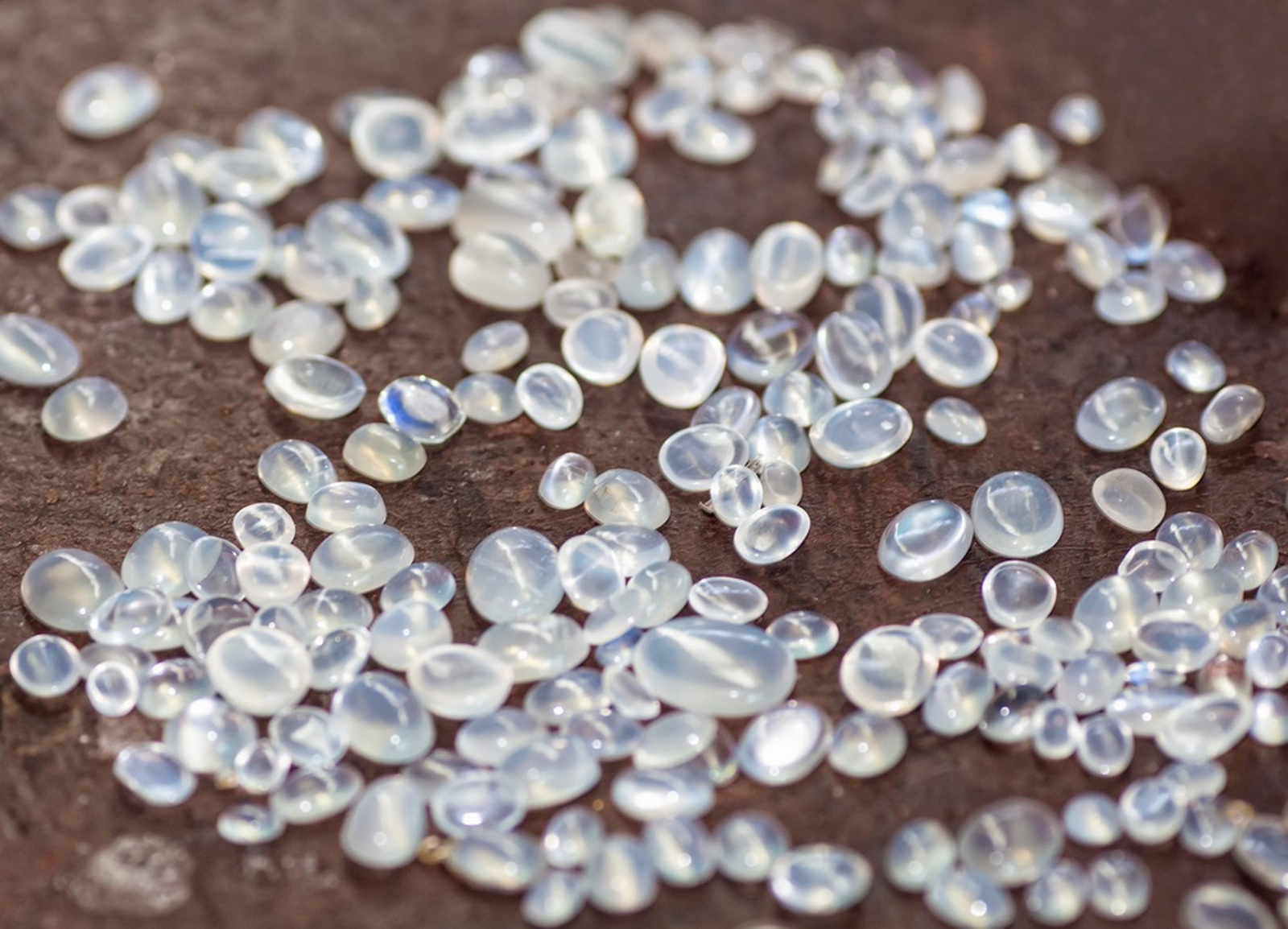
Do you have a penchant for full moons and magical moments, and do you tend towards the feminine? Then the moonstone is just the stone for you. But where does its name come from? Why is it women that go crazy for it? And just what makes it so irresistible? We reveal the mysteries of the moonstone.
The moonstone – a piece of the moon?
Overheard recently at an exhibition: “Is a moonstone a piece of the moon?” one child wanted to know from his father. The people round about exchanged smiles; the father hesitated to answer: “No, certainly not, you can’t just go breaking stones off the moon.” “But then why is it called moonstone?” asked the child. “Someone made up the name,” said the father, and the child was content with this.
A little bit of magic
Unlike us at Steinkult. We are itching to offer a little more detail on this point. Of course, moonstone does not come from the moon. Rather, it comes mostly from Sri Lanka, but also from Australia, Brazil, India, Myanmar, Austria and the US. But it does have something crucial in common with the moon: the unique shimmer that you see when moonlight is reflected in water – soft, waving, mystical. Have you ever experienced it? That magical moment on water on a moonlit night?
Mysterious as the moonlight
The moonstone shimmers with just such a mystical glow – and with that the secret of its name is solved. The soft shimmer comes from the way the gossamer-thin layers of minerals send the rays of light in different directions, an effect known technically as adularescence. Just like a mountain lake, the moonstone reflects the light – which gives it its breathtaking note of magic and special glow.
Gemstone of lovers
No wonder the effect the moonstone has on women especially is irresistible. After all the moon is seen as a symbol for all that cannot be explained between heaven and earth, for feelings and yearning, for change and transformation, for fertility, femininity – and for love. It is a typically feminine stone that emphasises the feminine side. In Arabic countries, the women even sew moonstones into their clothes when they want to have a child in the belief that it will increase their fertility. In India, moonstone jewellery is treasured because it is supposed to deliver wonderful dreams at night. And in many parts of the world, the stone, which belongs to the feldspar group of minerals, has always been known as the ‘gemstone of lovers’.
Breathtaking beauty
Whether as a gift for your true love, as a surprise for your best friend, or simply as a piece of jewellery for yourself, moonstone jewellery by Steinkult brings joy to everyone with an active imagination and a romantic soul, who loves mysteries and values true beauty. And, of course, like all stones at Steinkult, our moonstones are personally selected on the spot – on the earth, not on the moon!
